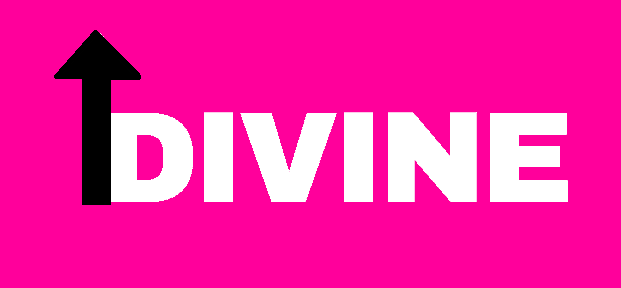Over thousands of years of mankind’s history, religion has played a major role in the development of the human race. Most beliefs are documented in ancient literature. When compared to scientific facts established today, how do these beliefs stand up -.does science invalidate religion?
All through the ages, mankind have clung to traditions and practises that were supposed to affect personal lives. Once, no nation would embark on a campaign or venture without the express permission and re-assurance of it’s religious leaders – Shamans, Gurus, Priests or Seers. Everyday life was governed by rituals, concoctions and invocations, for luck, fertility, success, and insight into the future. Even in 16th- and 17th-century Europe and England, Astrology was still a considered science in universities, and people still believed in witches and wizards who could cause people harm with this kind of power. The techniques included such things as making a wax image of a person and sticking pins into it, writing his name on a piece of paper and then burning it, burying a piece of his clothing, or doing other things to his hair, fingernail cuttings, sweat, or even excrement.
It was once thought that the presence of a diamond would cause wrongdoers to confess their sins. In addition, they could overcome poisons, end delirium and needless worry. They could curb violent feelings and thoughts of murder, and, above all, strengthen love. They could be used as an unfailing test for fidelity. Placed on the breast of the sleeping mate, one would cause the sleeper to reveal his most guarded secrets. It was thought they had the power to repel ghosts, to cause quarrels and terrors, and to bring death.
Most of these beliefs and practises originated from religions of the past, many of which are still with us today. A physician observed: “Many superstitions are still believed by large numbers of people such as, that a buckeye in the pocket will prevent rheumatism; that handling toads will cause warts; that wearing red flannel around the neck will cure a sore throat,” and others. Then there are the libraries of superstitions – such as spilled salt, black cats crossing paths, unlucky 13, etc.
Hindus believe that the Ganges has the power to release, purify, cleanse, and cure believers. Vishnu’s followers say in Sanskrit: “Visnu-padabja-sambhuta,” which means “Born of the lotus-like foot of Vishnu.” The average follower of Buddhism is simply preoccupied with worshipping idols and relics, gods and demons, spirits and ancestors, and performing many other rituals and practices that have little to do with what Gautama the Buddha taught.
The most prominent of these beliefs were the various creation accounts of different religions. Contemporary sources tell of mythological gods being split apart to create humans, or even the more recent Koran stating that mankind was made from a “blood clot.”
So – on the surface – religion, and superstition do not stand up favourably to scientific scrutiny.
But, among all of the ancient writings and oral traditions, there is one exception – one book that stands out from all others. The Physician who commented on the folklore and superstitions of the past, then wrote – “No such statements are found in the Bible. This in itself is remarkable.” Yes, for a book that was written between 3,600 and 2090 years ago, the Bible, surprisingly, contains no unscientific statements, or superstitions.
Yet, many accusations have been made against the Bible’s scientific credibility, However, most of these claims are based on misunderstandings of the actual biblical text itself, and often on the erroneous teachings of the churches of Christendom. So please consider, with an open mind, the following evidence, that reconciles the Bible with modern scientific understanding. You will find it enlightening, surprising, and for many of you who may be experiencing a crisis of faith – re-assuring.
But, first, let us consider an often raised objection to the Genesis account – namely that the universe was created in six literal days. Is that what the Bible really says?
The description of “days” over which creation was done by God has often been cited as an embarrassing error in the Bible. The Hebrew word for “day” (“yohm”) is indefinite, and can mean any specific period of time, from a period of daylight, to thousands of years. This is shown by the many various uses and contexts that the word “day” is written in the Bible. The human term “day,” the literal division of light and dark, is not introduced until the 4th creative “day.” The first six days of creation are concluded one by one, but when it comes to the the seventh day, it does not have this ending, indicating that this period, during which God had been resting from his creative works toward the earth, continued on. At Hebrews 4:1-10 the apostle Paul indicated that God’s rest day was still continuing in his generation, and that was more than 4,000 years after that seventh-day rest period began. This makes it evident that each creative day, or work period, was at least thousands of years in length. At the end of the creative period, Genesis says “This is a history of the heavens and the earth in the time of their being created, in the day that The LORD God made earth and heaven.” Here – the book of Genesis refers to the whole creative period as a “day.”
When God warns Adam not to eat from the tree, He uses an interesting phrase. Genesis records that God says “In the day that you eat from the tree, you will surely die.” Notice that it does not say “on” the day but, “IN.” That word changes the whole context of that statement. When we describe a particular day we always use the preposition “on” (on Monday etc.), yet when it comes to a longer period of time, we change to an adverb (“in January, in 1988”). Adam did not die on the same day that he disobeyed his creator, in fact, he went on to live for hundreds of years and had many children. The Bible was not referring to a 24 hour period, neither were the creative days 24 hour periods. Elsewhere in the Bible it tells us that God uses “a day for a year” when making certain prophecies (Ezekiel 4.6). Finally, Peter tells us that “One day is as a thousand years to God” (2 Peter 3). Sometimes a lifetime is described by the word “day” (“in Noah’s day”).
That is not to say that the earth is not millions of years old, the Bible gives no age for the earth, only for humans. The Bible simply states that “In the beginning God made the heavens and the earth,” it does not give a time period for how long the earth was “in darkness and covered with water.” It could have been millions, or billions of years (although there are question marks against many of the carbon dating methods used to date the earth). Regarding the human race however, the Bible indicates that mankind has only been on the earth for approximately 6,000 years. This is confirmed by the fact that no evidence of human agriculture or communication has ever been found that was dated more than 6,000 years old.
The following chapter reveals the Bible’s unique account of Astronomy and Physics.







